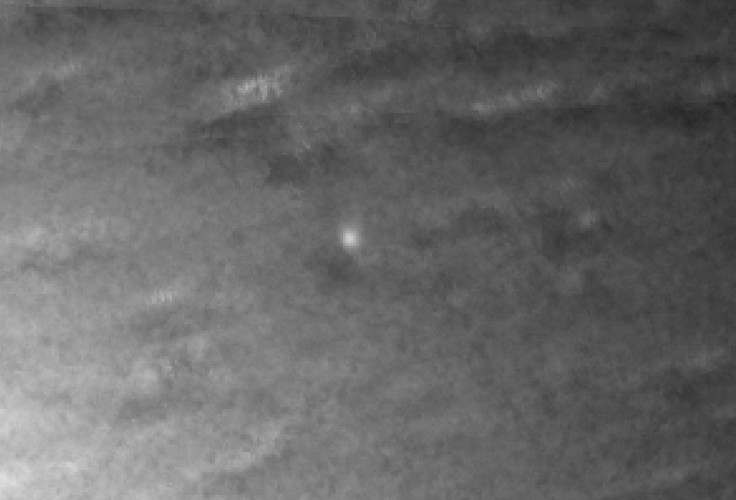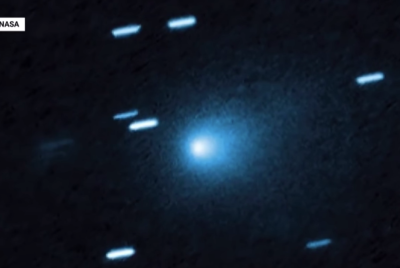3I/ATLAS: First Radio Signal Detected—Alien Origins Ruled Out?
3I/ATLAS: Radio signal decoded, alien origins ruled out.

Imagine the terror if a celestial visitor was not only on a collision course with Earth but also sending a mysterious radio signal. While the latest interstellar traveller, a cosmic mystery known as 3I/ATLAS, has been officially cleared as a threat, its recent appearance has forced scientists to confront a terrifying 'what if' scenario.
Since its detection on 1 July as only the third Interstellar Object (ISO) ever observed passing through our system, 3I/ATLAS has served as the catalyst for crucial new research.
Its presence caused initial widespread speculation, particularly when astronomers detected the first-ever radio waves allegedly coming from the comet. Though the signal ultimately proved natural, the incident raises a terrifying dual question: What if such an object were to slam into Earth, and what are we learning about these alien visitors?

The Global Bullseye: Why Low Latitudes Are the Danger Zone for 3I/ATLAS
Scientists, anticipating the possibility of future ISO impacts, have modelled the precise areas on our planet most susceptible to devastation by an interstellar visitor. According to the findings of a new study, titled The Distribution of Earth-Impacting Interstellar Objects, low latitudes, which are the regions near the equator, face the greatest risk from an ISO impact.
The Northern Hemisphere, home to approximately 90 per cent of the global human population, is also vulnerable to an impact, although perhaps not as acutely as the equatorial belt. This means that if an interstellar object were to crash into Earth, the majority of the world's population could be killed by the sheer concentration of the risk zone.
The study, which is currently available online at arxiv.org and was first reported by Universe Today, details the complex calculations required to predict these celestial impacts. The researchers wrote, as part of their objective: 'In this paper, we calculate the expected orbital elements, radiants, and velocities of Earth-impacting interstellar objects'.
This methodology focuses on simulating a stream of objects to statistically determine which regions of the planet are most likely to intersect with their trajectories. The outcome heavily favours an impact 'footprint' closer to the equator, presenting a high-risk scenario for numerous highly populated countries within that latitudinal band.
These low-latitude regions encompass vast swathes of South America, Central Africa, and Southern Asia, making the potential for mass casualties alarmingly high.

Decoding the First Signal from 3I/ATLAS: Natural Origins Confirmed
The focus on interstellar objects intensified when astronomers, using South Africa's powerful MeerKAT radio telescope, detected radio waves from 3I/ATLAS. The initial news instantly sparked intense, widespread speculation about possible alien origins, particularly because a small group of researchers, including Avi Loeb, a renowned alien-hunter, has claimed that the comet is an alien spacecraft. However, at present, there is no proof of such claims, as reported by Live Science.
The mystery was quickly solved by the data, which revealed that the signals were actually caused by natural reactions involving hydroxyl molecules, or OH, found in the comet's outer cloud. This process forms when water molecules from the comet escape into space and split apart—a natural phenomenon known as outgassing, which definitively shows that the comet is active. Loeb also mentioned the discovery of hydroxyl molecules in 3I/ATLAS in a recent update on his personal blog.
This confirmation that the emission source is natural hydroxyl gas is critical to understanding the comet's history. Speaking of this discovery, Dennis Bodewits, a physics professor at Auburn University, told the BBC, 'When we detect water — or even its faint ultraviolet echo, OH — from an interstellar comet, we're reading a note from another planetary system. It tells us that the ingredients for life's chemistry are not unique to our own.'
The recent detection of radio waves from the hydroxyl signature adds far more detail and specificity, giving scientists a clear chemical fingerprint of the distant solar system where the comet originated.
Where Do Interstellar Visitors Like 3I/ATLAS Come From?
The scientists' calculations are primarily based on interstellar objects that originate in M-stars, also commonly known as red dwarfs. This focus is not arbitrary; M-stars are the most abundantly found stars throughout the Milky Way galaxy, making it statistically probable that the majority of ISOs would be ejected from such solar systems due to gravitational perturbations, the study's authors noted.
Therefore, understanding the kinematics of objects from these systems is key to predicting the trajectory of visitors like 3I/ATLAS.
The research also deduced that most ISOs are likely to approach Earth from two main directions in space: the solar apex and the galactic plane. The solar apex is defined as the direction of the Sun's own path as it moves through the Milky Way. The galactic plane, meanwhile, is the flat, disk-shaped region that the Milky Way occupies—and the region where the vast majority of our galaxy's stars are located.
By understanding the relative motion of Earth and the Sun in relation to these two major directional markers, scientists can refine their predictions for the arrival points and seasonal likelihood of an impact event.

Future Missions: Will Juno Intercept a Signal from 3I/ATLAS?
Meanwhile, scientists and experts believe that, luckily, they still have enough time to observe this rare comet in greater detail before it heads back into deep space forever. The opportunity for further observation is approaching quickly.
Loeb spoke of this and said: 'On March 16, 2026, 3I/ATLAS is expected to pass within 53 million kilometers from Jupiter. At that time, [NASA's] Juno spacecraft will use its dipole antenna to search for a radio signal from 3I/ATLAS at low frequencies ranging from 50 hertz to 40 megahertz.'
This planned observation run is crucial, as the close flyby of Jupiter offers a unique window to study the comet's behaviour and emissions away from the immediate vicinity of the Sun. The interstellar objects that pose the most significant threat to Earth are predicted to move at much slower speeds upon arrival, a factor of gravitational focusing that increases impact likelihood in the winter months.

Faster ISOs, in contrast, are more likely to arrive in the spring. While the authors meticulously stressed that their primary work centres on M-star kinematics, they acknowledged that the underlying physics has broad applicability, admitting: 'that the main points in their work likely apply to other kinematics.'
They concluded their summary with a scientific caveat, stating: 'The salient features summarised in this section presumably also apply to different kinematics, perhaps to a muted or more distinct overall effect,' suggesting that while the details might change, the low-latitude danger zone remains a robust prediction for any future interstellar visitor.
The journey of 3I/ATLAS serves as a vital lesson: interstellar visitors, whether they spark theories of alien origins or simply carry natural, primordial water, demand our full attention. While the initial radio signal proved natural, the research it inspired confirms that future ISO impacts would pose a grave threat to the Earth's most populous low-latitude regions.
The work of planetary defence and deep space exploration is inseparable. Don't miss the next stage of this cosmic encounter: follow the upcoming NASA Juno mission as it attempts to observe 3I/ATLAS near Jupiter in 2026.
© Copyright IBTimes 2025. All rights reserved.





















